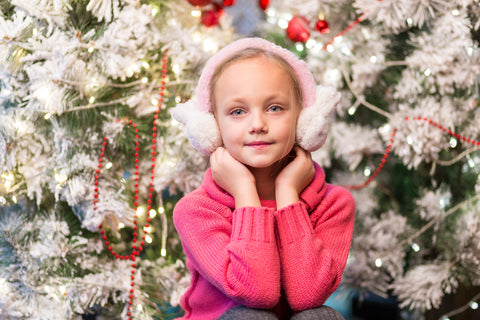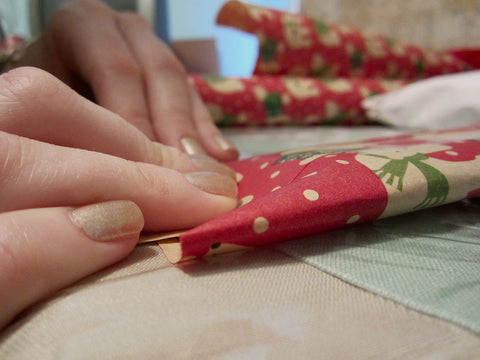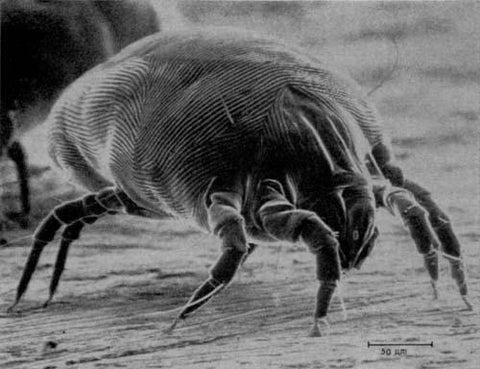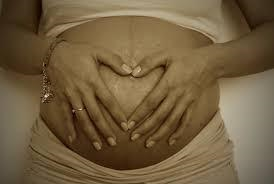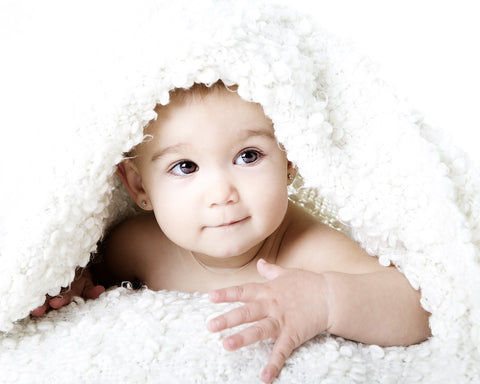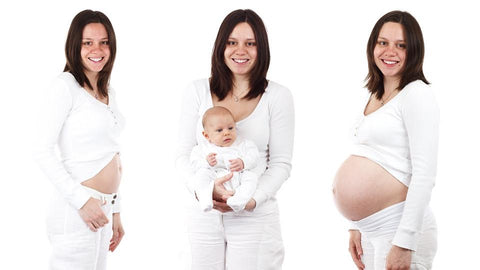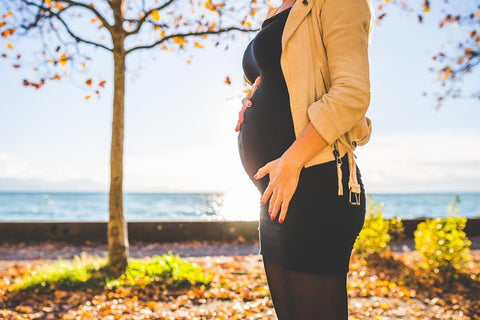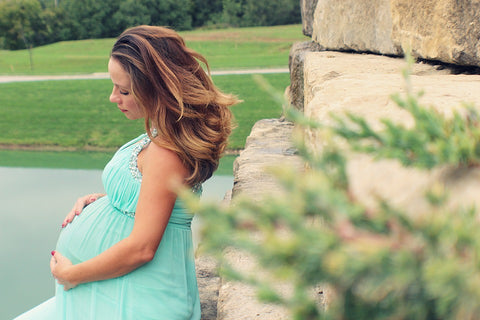Do you know what’s in your baby’s bedding?
Undoubtedly, you check to make share everything is safe that your baby touches, plays with, sleeps next to, or puts in her mouth. We’re certain that you’re carefully vetting every single product that goes into caring for your baby. But did you know what’s in your baby’s products that you can’t see?

How about skin irritants, lung-damaging particles, or chemicals that have been definitively shown to encourage the growth of certain cancers or hinder brain development? Sadly, it’s true. Most parents have no idea that each of these - and more - could be a part of your baby’s day products that you know and thought you could trust.
And it’s not your fault! Public institutions and government agencies are supposed to provide its citizens with the truth, but, as we shall see in this Guide, there are many factors involved that prevent parents from receiving information vital to protect their families.

Study after report after analysis has proven time and time again, that baby products from food to toys, to bath products, baby cribs and furniture, are toxic and especially harmful to infants and young children. There is more than meets the eye with many commercially-made baby items. And many of these surprises are not good.
Worried? Don’t be - because we’re about to give you the tools to identify harmful products and keep them OUT of your baby’s items. Once you know what you’re dealing with, you’ll know how to make changes that will make your baby - and your household - healthier and happier.
Here are a few chemicals and toxins found in general baby products.
The Nasty 9: Avoid THESE Dangerous Toxins in Your Baby’s Items
“But I’m not buying chemicals for my baby! What kind of a parent do you think I am?”
We agree. And a few years ago, we’d have said the same thing. Until we learned how the following 9 innocent-seeming items could actually be hurting our children.

We know you love your baby. And we know you’re careful. We were too, or thought we were - until a little investigation into our middle child’s constant ear infections, fussiness and a weird collection of hard-to-pinpoint maladies had both us and her pediatrician stumped. Then we did some investigating.
Here’s what we found out: These 9 toxins are an unwelcome surprise in millions of dollars of baby purchases each and every year.
Avoid these chemical and toxins when buying for your baby:
Number One: Talc
Talc is a powder primarily made up of magnesium, silicon and oxygen. It is meant to reduce skin-on-skin rubbing, reduce moisture and to provide a soothing feeling on diaper rash or other chafed areas.

Talc has been used for generations of babies and was once the code word for gentle mother-love: It soothed the bottoms and cute little creases.
Talc has its selling points for sure: It’s cheap, it’s easy to use, and it does reduce chafing and help to soothe diaper rash and prickly heat. However, what we know today would have alarmed our grandmothers (and may just alarm you): Talc is a lung irritant and is classed as a carcinogen, according to cancer.org.
Initially it was the presence of asbestos (yes, really) that was pointed to as the cancer-causing ingredient in old-fashioned talc. However, after the 1970s, when asbestos was removed from most talc products, the cancer danger was still evident. There is clearly another element to talk ultra-toxicity, and that element may be talc’s structure, which is actually composed of tiny, free-floating fibers. When inhaled, talc appears to increase rates of lung and ovarian cancer.
Look for talc-free alternatives, such as Burt’s Bees 100% Natural Dusting powder, or visit your local Whole Foods or natural health store for other alternatives.
Number Two: Fragrance
We realize that fragrance is a very general (and very big) category. There are many types of fragrances, including chemical-free plant extract varieties.
But let’s face facts: When it comes to commercially-prepared items - even those intended for Baby - the financial bottom line is often the primary concern for manufacturers. Cutting corners and saving cash tend to rule what fragrances are put into baby products - and that often means toxic, cheap additives.

Scientific American warns there may be dangerous additives and propellants in fragrances used by manufacturers in quantity (both for personal perfumes/colognes and those used to scent products, including baby items). These include petrochemicals - a class of toxins made from, believe it or not, petroleum and natural gas that have been linked to respiratory, neurological, skin and eye damage. In fact, there’s evidence that some forms of asthma may be linked to exposure of the sufferer to petrochemicals during childhood.
Steer clear of heavily, commercially fragranced baby products wherever possible. If in doubt, ask the manufacturer. Some scents, such as essential oils or water essences of plants deemed safe for human use, are harmless.
Number Three: Propylene Glycol
Propylene glycol is added to many personal care items, including skin and cleansing products and shampoos. It is a cheap derivative of fossil fuel and acts as a carrier for active ingredients. It appears in many baby washes, shampoos and creams, as well as baby wipes.

But what you may not have known is that propylene glycol is used in antifreeze and to de-ice planes. Oh, yes...and to put directly against your baby’s sensitive skin, as it effectively opens the pores.
Avoid it and its derivative names (PPG and PEG) and buy or make gentle wash products for baby instead.
Number Four: 1,4-dioxane And Ethoxylated Surfactants
Trust us, they’re as bad as they sound: These ingredients, while cheap and much coveted by large-scale manufacturers in all sorts of baby care categories, may have contaminant and carcinogenic qualities.
Sadly, these items are widely used in baby items. In fact, research from The Environmental Working Group revealed that a whopping 57% percent of baby soaps are contaminated with 1,4-dioxane.
The bigger problem? You won’t find these ingredients listed under their actual chemical names. So look out for these ingredient listing names for them instead:
- Polyethylene
- Polyethylene glycol
- Sodium laureth sulfate
- Ceteareth
- Oleth
- Oxynol
- Items ending in -xynol
- PEG

Number Five: Mineral Oil
Mineral oil is a bit of a paradox in that it sounds so...well, unharmful. Mineral oil has been used as a personal care item for centuries.
Rather than one product, mineral oil is a category and is largely a derivative of the process of turning crude oil into gasoline. This process means it may be contaminated with other toxic constituents. And from the standpoint of Baby’s comfort, it can clog pores (it is considered “comedogenic”) and could make him uncomfortable, potentially worsening rashes and other skin conditions.
Making matters worse, mineral oil for baby care is often mixed with toxic ingredient-based fragrances (see above). This is NOT a combination you want near your baby!
Like other items above, mineral oil, too, hides under a variety of names. Look for it under:
- Paraffin oil
- Liquid petroleum (rarely used in baby products due to its negative associations, but you may occasionally see this designation)
- White mineral oil
Number Six: Parabens
Parabens, parabens everywhere - where AREN’T these innocent-sounding but potentially dangerous preservatives? Parabens (ethyl, methyl, butyl or propyl) are routinely found in:
- Baby soaps
- Baby liquid washes
- Moisturizers/creams
- Rash products
- Wipes
That’s not all, but these are the items physically closest to your baby. Read the ingredients label; you may be surprised - and not in a good way.

So what’s the problem? Parabens have been implicated by studies as being linked to issues for adults and children alike, including asthma, allergies, several forms of cancer and for both women and men, infertility issues.
As effects could compound with more uses, you don’t want to get Baby started down this path. Read labels and put the ones with parabens back on the shelf.
Number Seven: Triclosan
We all want to keep our children as clean and germ-free as possible. It’s common sense: Fewer germs should mean, over time, fewer illnesses, which is particularly important for vulnerable babies and toddlers.
Unfortunately, many baby products labeled “antibacterial” contain Triclosan, which the National Institutes of Health (NIH) believes to be an endocrine disruptor, at least in rats, per the results of this and other studies. We’re not rats, but we are mammals, and our endocrine system works similar to other mammals. Results of studies such as these are eye-opening, and serve as a warning to avoid items that could harm our hormonal interplay - whether for adults or children.

In fact, endocrine disruption may be even worse in young children, whose bodily organs and endocrine system are still developing and maturing. The endocrine system includes the ovaries or testes, pancreas, pituitary (which dictates a child’s physical growth) and pineal glands, salivary and sweat glands, and gastrointestinal tract.
Keep your baby healthy in other ways. Don’t take her out into public for extended periods during cold, cough and flu season, and keep her from touching items in public and going near strangers during this time. Wash Baby’s hands frequently. Cover your mouth with the inside of your elbow when you cough or sneeze (if you cover with your hand, the hand receives the bacteria, which you then pass to your baby and onto surfaces with your touch). Teach your toddler to do the same.
Also teach your developing toddler as early as possible not to put playground toys or other objects into her mouth. And be sure to take her for regular well-child checkups. A healthy diet high in vitamins, minerals and antioxidants - usually found in fruits and vegetables - will help, too.
Number Eight: Flame Retardants
Flame retardants made from Polybrominated diphenyl ethers, or PBDEs, were banned more than a decade ago due to their toxicity, but older furniture may still contain them, and other types of flame retardants are still in use. In particular, foam-filled cushions and pillows may have been treated with flame retardants.
PBDEs pass easily through the placenta of a pregnant mother into the fetus and from breast milk to a feeding infant.

There are more than 209 PBDE compounds. Toxic effects range from behavior issues and learning disabilities to an impaired reproductive system.
Look out for ingredients under any of these names:
- PentaBDE
- OctaBDE
- DecaBDE
- HBCD
- TBBPA
These may not be listed; ask the manufacturer. If you can’t get a clear, definitive answer, choose a different product. There’s a reason for secrecy among marketers, and that reason is usually tied to legalities from negative issues. Avoid!
Number Nine: Lead
We found this hard to swallow, too: There is an acceptable amount of lead that can be found in commercial food items...including baby food.
Yes. Seriously. An acceptable amount of lead.
Lead can cause birth defects when ingested by pregnant women and can harm the brains and nervous system of babies and children.
The scary part here is that highly trusted commercial baby food preparers such as Dole and Gerber (see below) are being taken to task to force them to disclose even trace lead amounts. This means you can’t necessarily rely on the companies you were so certain had your baby’s best interests at heart.

So far, there aren’t many clear designations for forced-disclosure trace ingredients on some baby foods. Lobbying continues for safer labeling, but in the meantime, buy organic, or grow and grind up/pulverize your own fruits and veggies to feed to Baby.
If Toxins Are Easy To Spot, What’s The Big Deal?
You know how to read a label, and you know what a “chemical” name sounds like. And well-known companies wouldn’t hurt babies; they’d be sued left, right and center right out of business. Right?
Not necessarily.
We don’t always know when a company is poisoning us...or our children.
Here’s an example...
A case in point: Over 80% of all toddler products contain toxins, Duke University says.
Yes, you read that correctly...EIGHTY percent!
We know...we were shocked, too.
Flame retardants were fingered in a 2011 study from Duke University as having been found in baby items from car seats to changing pads to portable cribs.
Fully one-third contained chlorinated tris (TDCPP), a potentially carcinogenic ingredient that is supposed to have been removed from children’s clothing during the 1970s. (The reasons are unclear, though the items may have come from nations that do not have the ban.)
Another flame retardant, TCEP, listed as a carcinogen in the state of California, was found in 10 nursing pillows tested for the study.
And the CDC (Centers for Disease Control) claims 90% of human beings have measurable flame retardant levels in their bodies, with toddlers having three times the level as adults.
It’s difficult to say how this is happening, though one possibility is cross-contamination during the manufacturing process due to old equipment. Another reason is that imported products may come from countries that have different regulations.
If in doubt, ask the manufacturer. Request a clear WRITTEN letter or email briefly stating, “Our products do not contain (ingredient H) and were not produced using (ingredient H).” If the manufacturer refuses, there’s a reason. Leave the item on the shelf.
Ultimately, your best line of defense is to simply not buy foam products. Use cotton, hemp or wool instead. But are cotton, hemp or wool all created equal? We’ll discuss this later in this article.
But The ‘bigger’ Companies Are Trustworthy … Aren’t They?
In a word: No.
In this shocking story from 2013, the Environmental Law Foundation (EPA) took three trusted baby/family brands - Dole, Del Monte and Gerber - to court for not delivering lead warnings in baby food. They aimed to have smaller than currently FDA-accepted levels of lead to be disclosed per California’s Prop 65 toxin warning law.
If Gerber can feed your child lead (and spend money to fight for their right to continue doing it), you know that there’s only one entity after your baby’s best health interests: You!
All Washed Up: Bath Time Could Be Harmful To Your Baby
What your baby sleeps and sits on and even what she eats may be harming him via toxins. But what about the bath? We don’t normally think of bathtime - which is generally a soothing, loving part of any child’s day - as hurtful. But even bath products labeled ‘Extra Gentle’ or ‘Safe for Baby’s Delicate Skin’ may be doing him more harm than good.

The Campaign for Safe Cosmetics - a subset of Breast Cancer Prevention Partners - found in their research that 61% of popular children’s bath products tested contained the toxins 1,4-dioxane and formaldehyde.
The EPA classifies each of these as “reasonably anticipated to cause cancer in humans.”
Frighteningly, “trusted” baby bath products that contained such ingredients included, per the study:
- Johnson’s Baby Shampoo
- Sesame Street Bubble Bath
- Baby Magic Lotion
- Huggies Naturally Refreshing Cucumber & Green Tea Baby Wash
- Grins & Giggles Milk & Honey Baby Wash
- American Girl Shower Products
- Several Bath & Body Works child bath formulations
Still Feel Safe? We Wish We Could Agree With You…
Also in the study, 82% of baby products tested were found to contain between 79 ppm (parts per million) and 610 ppm of formaldehyde.
How can this happen, unchecked and stopped?
According to Stacy Malkan, who headed up the CFSC’s report: “Because they’re technically not ingredients, formaldehyde and 1,4-dioxane are exempt from current US Food and Drug Administration (FDA) labeling laws.”
That means not only these but many other baby products, including bath and shower items, may be just as dangerous...and we’d never know it.
What Is The Government Doing About This Issue?
Even those who are less government-centric might expect authorities to step in. This is, after all, a matter of the health of innocent babies, who can’t protect themselves.
Sadly, we can’t count on the government to protect infants and young children any more than we can depend upon corporate baby product sellers to stop using “allowable” toxins in the name of saving time and money for themselves.
This eye-opening story from the LA Times suggests that of 85,000 industrial chemicals currently in use across the globe, just 200 have been tested and/or regulated.
And while a number of bills have been taken to Congress in an effort to test and regulate chemicals more thoroughly, not much headway has been made.
Doing the math, that is well in excess of 84,500 untested CURRENTLY USED potentially toxic chemicals we - and our infants - are exposed to...every single day.
As healthystuff.org commentators so revealingly pointed out, “The U.S. government doesn’t require full testing of chemicals before they are added to most consumer products...once they are on the market, the government almost never restricts their use, even in the face of new scientific evidence suggesting a health threat (italics ours).”

In Bed Together: Government And Big Corporations
It’s no secret that government and big business have been holding hands for decades on any number of issues. Usually, the bottom line is money, both in profit and in protection against potential lawsuits.
It’s not as if some officials haven’t gone to bat in favor of common health, but making headway is difficult in the face of two such large categories, their funds, and their lawyers.
In 2009, State Sen. Mark Leno introduced a bill that would end the requirement that certain baby items be treated with toxic flame retardants. While the use of flame retardants initially had a positive motivation - the safety of children - discovering their overall toxicity has brought to light the fact that they may just be doing more harm than good. (See our coverage of Flame Retardants earlier in this article.)
Mysteriously, those initially supportive of the bill did a complete 180 immediately before the hearing...without any known cause.
For example, the deputy director of the State Department of Consumer Affairs, a regulating authority for baby and other products, initially supported the anti-flame retardant bill. Yet per their own admission, the agency withdrew support just hours before the hearing.
We can’t postulate here exactly what prompted the withdrawal, but it’s obvious minds can be changed in official organizations in a direct way. And such changes don’t require explanations. This means we can’t count on even initially supportive “powers that be” to help protect our families from toxin dangers.
The Good News: How To Make Healthier Choices For Your Baby
There’s a lot of scary news in the items listed above. Is there any good news?
Yes! There ARE ways to help protect your baby from toxins in her bedding, personal care items, and food.

Here are ways to ensure your baby is safe - so you can rest easy.
- Choose organic fibers for mattresses. It sounds counterintuitive, but foams such as polyurethane commonly found in infant mattresses and toddler pillows (NOTE: Only give pillows to healthy children 24 months and older) can actually encourage pests such as dust mites. With certified 100% organic wool, cotton and natural rubber, breathability means less moisture is trapped and bad little bugs are less at home. This means going natural with your baby’s mattress does double-duty: You not only remove the threat of toxic foams, you also reduce the chance of pests that can irritate Baby’s skin and airways.
- Choose breathable cotton bedsheets. Make sure they’re not treated with flame retardants.
- Try natural rubber for sheet protection, or double-up overnight on cloth diapers and a diaper insert so Baby can sleep comfortably.
- Grow your own fruits and veggies (if possible) and make your own baby food. Many fruits and veggies can be grown in pots indoors (in sunny areas) or on a patio; some can be encouraged to climb up trellises. These gardening hacks will all save space. If you can’t grow your own food for Baby, buy organic and, if you can, from local farmers to support small-scale family owned farming. Making the baby food is incredibly easy: Get a baby food grinder for older babies and toddlers or puree in a Magic Bullet or any food processor.
- Use natural and certified organic baby bath and lotion products. A general rule is: The fewer the ingredients, the better. Be warned, though - this has its exceptions. For example, “just talc” and “just mineral oil” are both dangerous (see above).
- Instead of commercially prepared baby wipes, use old pieces of soft, absorbent material, such as terry cloth from cut-down towels or washcloths. Wet; clean Baby up; pop into the washer with your cloth diaper washing for the week.
- NEVER accept used cribs, mattresses and pillows, even as gifts. Grandma or your cousin may mean well, but standards for avoiding toxins get better each year...which means each year you go back in time means potentially more chemicals. In addition, you won’t be sure the bedding wasn’t manufactured in countries without certain toxin prohibitions or that they haven’t been cross-contaminated with other items. Buy ALL of your infants’ sleep materials new, certified, and researched by you.

Certification Standards And Helpful Organizations
Consumer Reports published a list of natural and organic certifications and organizations that represent the top mattress labels in the US. Manufacturers can use marketing terms like ‘natural’ and ‘organic’ on their mattresses as marketing ploys to increase their sales even though they do not adhere to any actual standards or require verification. For a mattress to be truly organic, it would need to contain a minimum of 95% certified organic materials.
Here is a list of organic mattress labels you can trust:
- The gold standard for natural products is GOTS (Global Organic Textile Standard) and GOLS (Global Latex Standard). These are the only two mattress labels that are truly organic. Organic certification under GOTS or GOLS guarantee at least 95% certified organic materials. Further, these certified organic certifications outright ban the use of toxic materials in the other 5%, for example, flame retardants and even polyurethane, which is the main ingredient used to manufacture memory foam.
- Another good certification body is Oeko-Tex Standard 100. This set of criteria does not ensure that product is produced organically, but it does set limits for various chemicals and chemical processes. These include limits on the emission of potentially toxic materials during processing. In addition, allergen-producing dyes, flame retardant chemicals and colorants are prohibited.
- The Eco-Institut label includes mattresses and bedding, furniture, consumer goods and building materials. The organization tests extensively to control emissions during production of items and strictly limits these.
- Oregon Tilth has delivered accurate, reliable organic certification for more than 30 years so far. They impose strict standards on production, inspections and the law as it relates to manufacturing and selling products with organic claims on the label.
- Green America is known for its Gold Certified segment, watchdogging companies to make sure they promote social justice and environmental sustainability, according to company officials. By demanding responsibility and transparency, the organization seeks to encourage more green, safe products across a variety of sectors than ever before.
- The IOAS (International Organic Accreditation Service) dedicates its services to investigating and confirming eco- and green-label claims in agriculture, environmental concerns and fair trade. The organization works globally to make sure companies making these claims are performing to standards.
- The OTA (Organic Trade Association) is membership-based. It represents more than 8500 organic businesses across the U.S. Members include farmers and farmer’s associations, processing facilities, certifiers, shippers, exporters, and consultants, to name a few. Products related to baby care concerns may include foods and beverages, organic fibers, household cleaners, and personal care products.
- The USDA Organic label has strict requirements for organic products. They must be produced without non-certified methods, such as GMO’s and ionization. There website also lists certified organic farms and businesses in the US.
- CertiPUR-US is a certification program for foam bedding. We’ve talked quite a bit about mattresses and bedding (which is a natural fit for your concerns, as infants sleep up to 60% of their day, and toddlers, up to 50%). CertiPUR-US prohibits formaldehyde, regulated phthalates and other dangerous ingredients, additives and coatings in foam mattresses.
- Greenguard and Greenguard Gold have stringent limits on fomaldehyde and other volatine organic compounds (VOCs) in mattresses and other home products.
These top mattress labels that you can trust also apply to other products for the home and bedroom. For example, you can find pillows that are certified GOTS or GOLS.

Buy Organic or All Natural: The Only Choice For Your Family
When it comes to protecting your baby, your best tool is knowledge. Read all labels. Ask the manufacturer or seller questions. And when you can, make your own items for your baby, or try all-natural materials as alternatives to commercial preparations.
Purchasing organic or all natural from independently certified manufacturers is the only safe choice for your family to avoid these chemical or toxins. Every member of your family is exposed to toxic chemicals in school, in the work environment, and in the home.
Infants and expecting mothers are considered highly susceptible to exposure to chemicals and toxins in the home. We can consciously choose to reduce these toxins in the home by eliminating the harmful products, and replacing them with healthy, organic alternatives.
If you would like more information about the brands and choices that you have as a parent or expecting parent, click this link and download out Organic Baby Holiday Gift Guide.
Instead if researching online and browsing multiple websites for all natural or certified organic products, All Organic Home offers the world’s largest online selections of organic bedding, pillows, mattresses, bed linen, comforters, swaddles, cribs and other natural necessities for Your Baby and for Your Home.
Every step you take toward helping your baby lead a toxin-free life is a step in the right direction ... and a giant stride towards their healthy future.
Your Home. Your Life. All Organic.
Source URL:
The Ultimate Guide to Chemicals and Toxins in Baby Products
